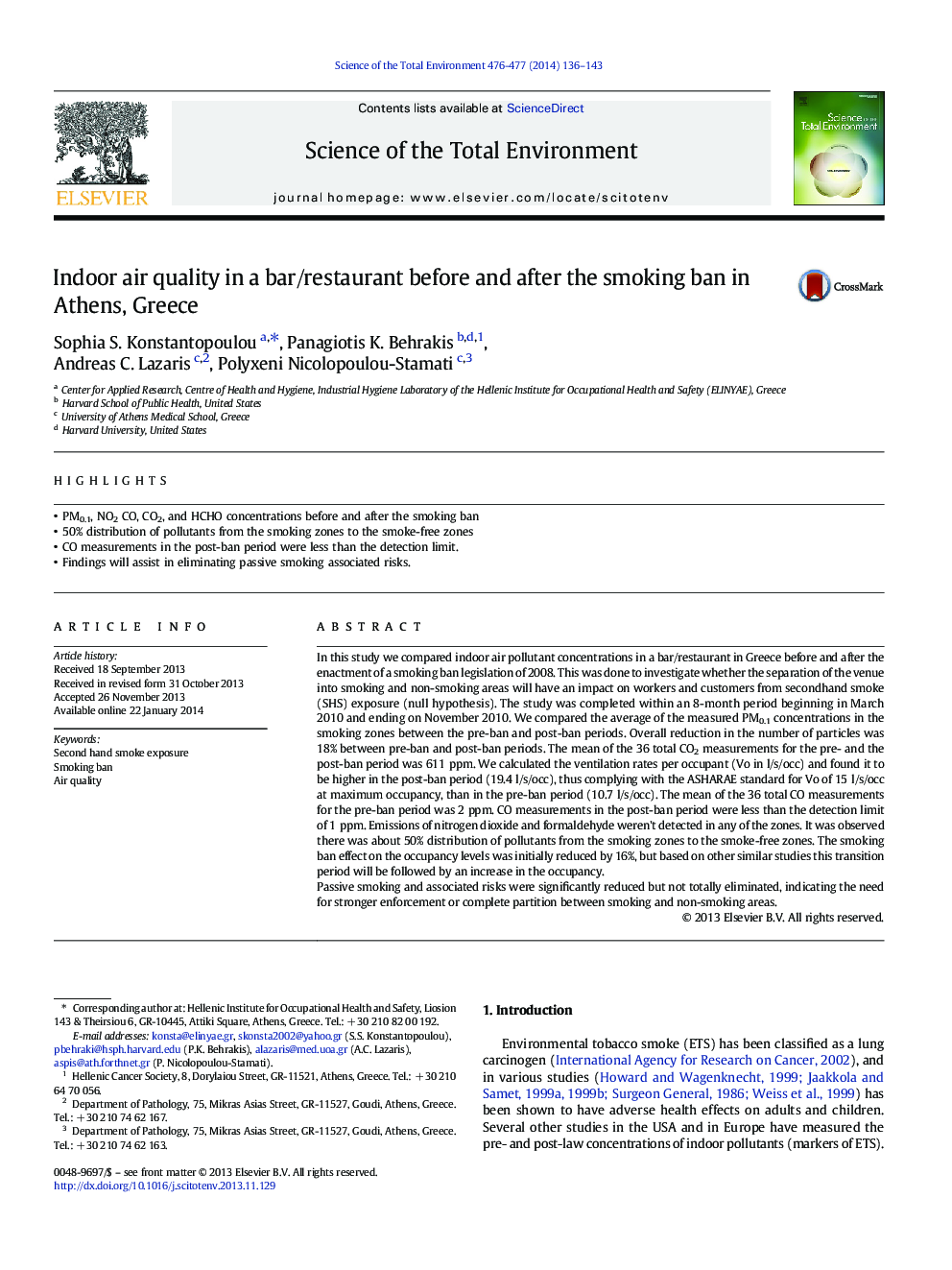| کد مقاله | کد نشریه | سال انتشار | مقاله انگلیسی | نسخه تمام متن |
|---|---|---|---|---|
| 4428530 | 1619789 | 2014 | 8 صفحه PDF | دانلود رایگان |
• PM0.1, NO2 CO, CO2, and HCHO concentrations before and after the smoking ban
• 50% distribution of pollutants from the smoking zones to the smoke-free zones
• CO measurements in the post-ban period were less than the detection limit.
• Findings will assist in eliminating passive smoking associated risks.
In this study we compared indoor air pollutant concentrations in a bar/restaurant in Greece before and after the enactment of a smoking ban legislation of 2008. This was done to investigate whether the separation of the venue into smoking and non-smoking areas will have an impact on workers and customers from secondhand smoke (SHS) exposure (null hypothesis). The study was completed within an 8-month period beginning in March 2010 and ending on November 2010. We compared the average of the measured PM0.1 concentrations in the smoking zones between the pre-ban and post-ban periods. Overall reduction in the number of particles was 18% between pre-ban and post-ban periods. The mean of the 36 total CO2 measurements for the pre- and the post-ban period was 611 ppm. We calculated the ventilation rates per occupant (Vo in l/s/occ) and found it to be higher in the post-ban period (19.4 l/s/occ), thus complying with the ASHARAE standard for Vo of 15 l/s/occ at maximum occupancy, than in the pre-ban period (10.7 l/s/occ). The mean of the 36 total CO measurements for the pre-ban period was 2 ppm. CO measurements in the post-ban period were less than the detection limit of 1 ppm. Emissions of nitrogen dioxide and formaldehyde weren't detected in any of the zones. It was observed there was about 50% distribution of pollutants from the smoking zones to the smoke-free zones. The smoking ban effect on the occupancy levels was initially reduced by 16%, but based on other similar studies this transition period will be followed by an increase in the occupancy.Passive smoking and associated risks were significantly reduced but not totally eliminated, indicating the need for stronger enforcement or complete partition between smoking and non-smoking areas.
Journal: Science of The Total Environment - Volumes 476–477, 1 April 2014, Pages 136–143
